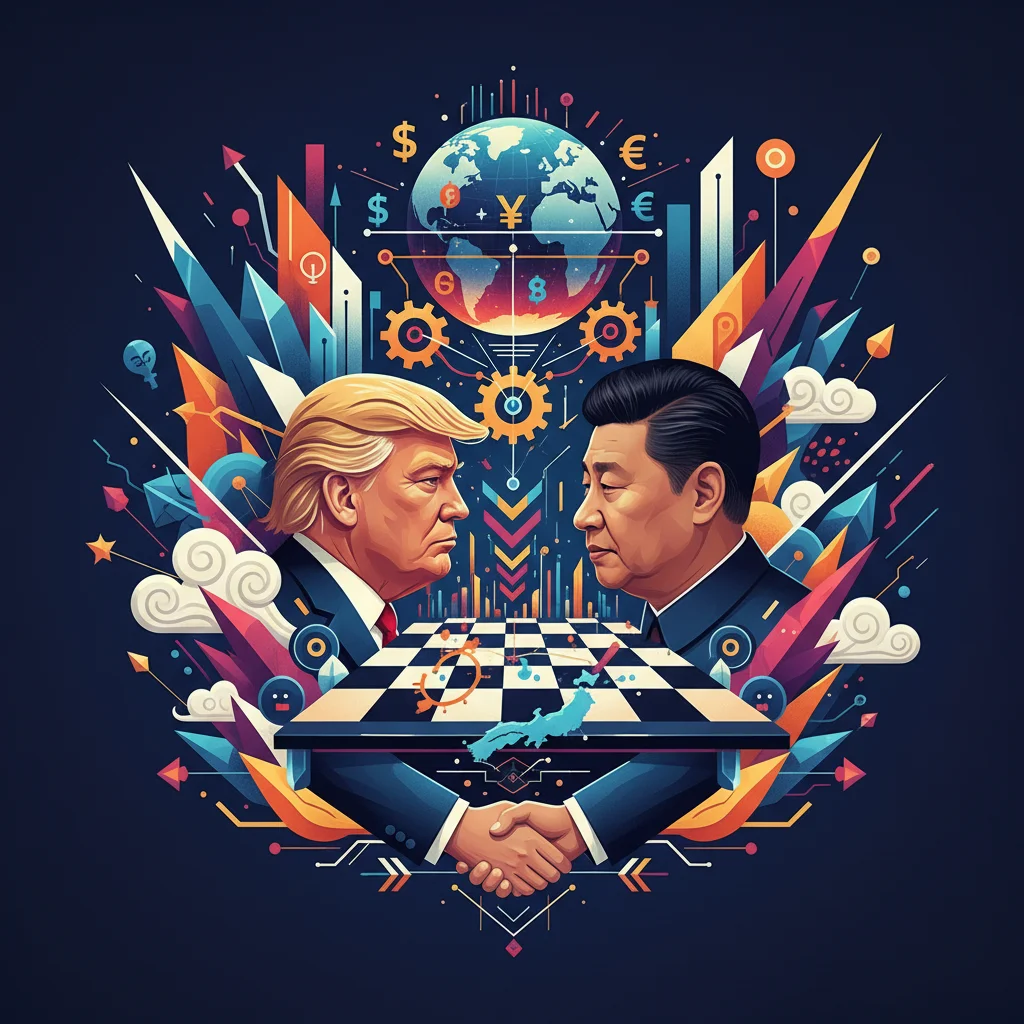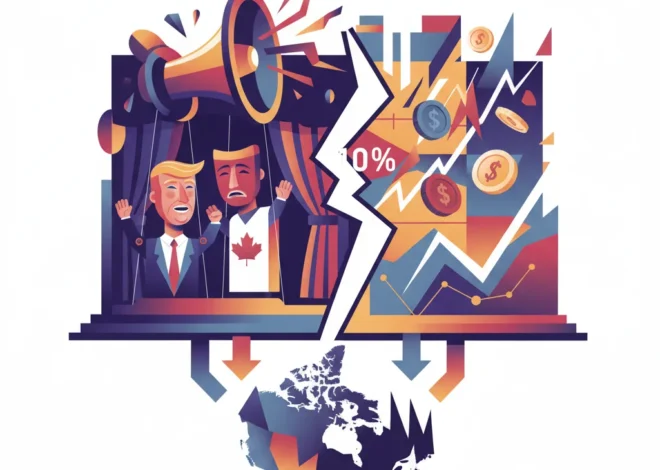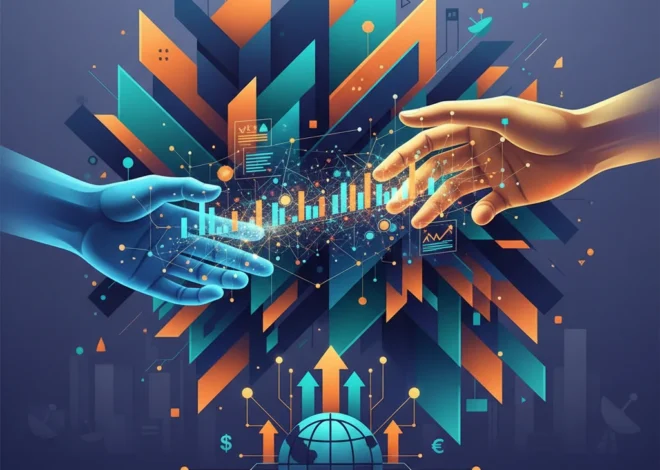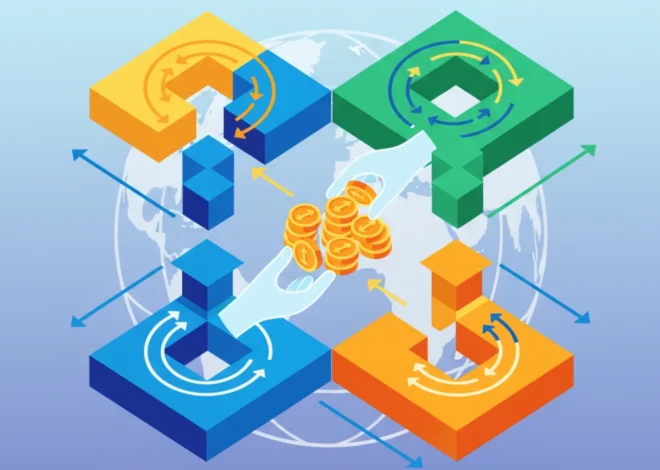
High Stakes in Asia: Decoding the Trump-Xi Summit and Its Impact on the Global Economy
The Global Chessboard: More Than Just a Handshake
As Air Force One touched down in Malaysia, it marked the beginning of President Trump’s pivotal Asia tour. Yet, the diplomatic pleasantries and regional discussions are merely the prelude to the main event: a high-stakes summit with Chinese President Xi Jinping. While officials from both nations engage in tense, closed-door negotiations, the global financial community holds its breath. This is far more than a political photo-op; it’s a critical juncture that will define the trajectory of the global economy, shape international trading relationships, and send shockwaves through the stock market for years to come. For investors, finance professionals, and business leaders, understanding the nuances of this geopolitical drama is not just an academic exercise—it’s essential for navigating the volatile waters ahead.
The core of the conflict, which has simmered for years before boiling over into a full-blown trade war, revolves around fundamental differences in economic ideology and national ambition. The U.S. has long cited a massive trade deficit, intellectual property theft, and unfair market practices as key grievances. According to the U.S. Census Bureau, the trade deficit in goods with China stood at hundreds of billions annually, a figure that became a central focus of the administration’s policy. This isn’t just about numbers on a spreadsheet; it’s about industries, jobs, and a battle for technological supremacy that will dictate the future of global finance and innovation.
Anatomy of a Trade War: A Timeline of Tariffs and Tensions
To fully grasp the stakes of the upcoming summit, it’s crucial to understand how we got here. The trade conflict didn’t erupt overnight. It was a methodical escalation of tariffs and retaliatory measures that disrupted supply chains and created unprecedented uncertainty in the market. Each announcement sent ripples through the investing world, forcing companies to re-evaluate their global footprints and hedge against currency and policy risks.
Below is a simplified overview of the key escalations that have defined this economic standoff:
| Phase | U.S. Action | China’s Retaliatory Action | Key Sectors Affected |
|---|---|---|---|
| Phase 1 (Early 2018) | Tariffs on solar panels and washing machines, followed by 25% tariffs on $50 billion of Chinese goods (industrial machinery, electronics). | Retaliatory tariffs on $50 billion of U.S. goods, including soybeans, automobiles, and aircraft. | Technology, Agriculture, Manufacturing |
| Phase 2 (Late 2018) | 10% tariffs on an additional $200 billion of Chinese goods, threatening to increase to 25%. | Tariffs on an additional $60 billion of U.S. goods. | Consumer Goods, Industrial Supplies |
| Phase 3 (2019) | Increase of tariffs on the $200 billion list to 25% and tariffs on remaining Chinese imports. | Halted purchases of U.S. agricultural products and raised tariffs on existing lists. | Nearly all sectors, global supply chains |
This tit-for-tat escalation has created a climate of instability, making long-term capital investment a high-risk gamble for multinational corporations. The uncertainty has been a significant drag on global GDP growth, a fact noted by organizations like the International Monetary Fund, which warned of the widespread negative effects on the global economy.
The Great Wall of Finance: Why Beijing Halted Big Tech's Stablecoin Dreams
Beyond Soybeans and Steel: The Battle for Technological Supremacy
While tariffs on goods like soybeans and steel grab headlines, the more profound conflict is being waged over the future of technology. Issues like forced technology transfer, intellectual property protection, and national champions like Huawei are at the heart of the dispute. This is a struggle for control over the foundational technologies of the 21st century: 5G, artificial intelligence (AI), and semiconductors. The outcome will not only determine economic leadership but also have significant national security implications.
For the world of finance, this technological cold war is particularly salient. The rise of financial technology, or fintech, is a key battleground. China’s rapid advancements in digital payments and its experimentation with a central bank digital currency (CBDC) represent a potential challenge to the long-standing dominance of the U.S. dollar in global banking. Similarly, the application of blockchain technology for supply chain management and cross-border payments is another area where geopolitical alignment could influence which standards and platforms become dominant.
The Market’s Reaction: Volatility, Sentiment, and Sector Rotation
The stock market has been a real-time barometer of trade tensions, with algorithms and human traders reacting instantly to every tweet, headline, and rumor. The CBOE Volatility Index (VIX), often called the market’s “fear gauge,” has seen significant spikes corresponding with major escalations in the trade war (source). This volatility reflects the deep uncertainty about corporate earnings, consumer demand, and the health of the global economy.
Investors have been forced to navigate a complex landscape of sector rotation. Companies with heavy reliance on Chinese manufacturing or sales (e.g., Apple, Nike) have faced intense scrutiny, while those with more domestic-focused operations have been seen as safer havens. The semiconductor industry, in particular, has been caught in the crossfire, emblematic of the deeply intertwined nature of U.S. and Chinese tech supply chains. This environment has made fundamental analysis more challenging, as geopolitical headlines can easily overshadow strong corporate performance.
The Ultimate Risk Analyst: What Investors Can Learn from War Photographer Lynsey Addario
Navigating the New Normal: Strategies for Investors and Business Leaders
So, what can be done? While the macro environment remains unpredictable, proactive leaders and savvy investors are not powerless. The key is to shift from a reactive to a strategic mindset, focusing on resilience and diversification.
Here are some key considerations for the road ahead:
- Supply Chain Diversification: The most immediate lesson for businesses is the danger of over-concentration. Companies are actively exploring a “China Plus One” strategy, diversifying manufacturing and sourcing to other countries in Southeast Asia, Mexico, and Eastern Europe. This shift has profound implications for global logistics and foreign direct investing.
- Portfolio Hedging: For investors, this environment underscores the importance of a diversified portfolio that is not overly exposed to a single geographic region or industry. Strategies may include increasing allocation to non-correlated assets, using options to hedge against downside risk, or focusing on companies with strong domestic demand and pricing power.
- Monitoring Key Indicators: Beyond the summit’s official communiqués, watch the subtle signals. Pay attention to currency fluctuations (especially the USD/CNY exchange rate), commodity prices (like copper and soybeans), and the bond market. These are often the canaries in the coal mine for shifts in global economic sentiment.
- Embracing New Technologies: Proactive companies are leveraging financial technology to manage risk. Advanced treasury management systems can help manage currency volatility, while blockchain-based platforms offer the potential for more transparent and secure supply chain financing and tracking, mitigating some of the operational risks of a fragmented world.
Conclusion: The Dawn of a New Economic Era
As President Trump and President Xi prepare to meet, the world watches, waiting for a signal. A comprehensive deal could unlock a wave of relief, potentially fueling a significant market rally. A complete breakdown, however, could plunge the global economy into a recession. The most likely outcome is something in between: a fragile truce with core strategic issues kicked down the road.
Regardless of the immediate result, this summit is a landmark moment. It solidifies the transition from an era of cooperation to one of competition. For everyone involved in the worlds of finance, investing, and business, the key takeaway is that geopolitical risk is no longer a tail risk; it is a central, driving force in modern economics. The ability to understand and adapt to this new reality will be the defining characteristic of success in the decade to come.


